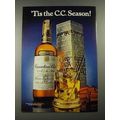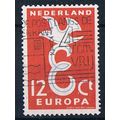Adelaide, S Australia - Festival Theatre at sunset - postcard c.1980s
- Condition : Used
- Dispatch : 2 Days
- Brand : None
- ID# : 180570372
- Quantity : 1 item
- Views : 142
- Location : United Kingdom

- Seller : justthebook (+1704)
- Barcode : None
- Start : Wed 08 May 2019 10:04:22 (BST)
- Close : Run Until Sold
- Remain : Run Until Sold
More Listings from This Seller view all
Seller's Description
- Postcard
- Picture / Image: Adelaide Festival Theatre at sunset [South Australia]
- Publisher: National View by Murfett Pty Ltd
- Postally used: yes
- Stamp: removed
- Postmark(s): illeg.
- Sent to: Chaucer Road, Bath, Avon, England
- Notes / condition:
Please ask if you need any other information and I will do the best I can to answer.
Image may be low res for illustrative purposes - if you need a higher definition image then please contact me and I may be able to send one. No cards have been trimmed (unless stated).
------------------------------------------------
Postage & Packing:
Postage and packing charge should be showing for your location (contact if not sure).
No additional charges for more than one postcard. You can buy as many postcards from me as you like and you will just pay the fee above once. Please wait for combined invoice. (If buying postcards with other things such as books, please contact or wait for invoice before paying).
Payment Methods:
UK - PayPal, Cheque (from UK bank) or postal order
Outside UK: PayPal ONLY (unless otherwise stated) please. NO non-UK currency checks or money orders (sorry).
NOTE: All postcards are sent in brand new stiffened envelopes which I have bought for the task. These are specially made to protect postcards and you may be able to re-use them. In addition there are other costs to sending so the above charge is not just for the stamp!
I will give a full refund if you are not fully satisfied with the postcard.
----------------------------------------------
Text from the free encyclopedia WIKIPEDIA may appear below to give a little background information (internal links may not work) :
*************
Adelaide (/ˈædəleɪd/ () AD-ə-layd)[8] is the capital city of the state of South Australia, and the fifth-most populous city of Australia. In June 2017, Adelaide had an estimated resident population of 1,333,927.[1] Adelaide is home to more than 75 percent of the South Australian population, making it the most centralised population of any state in Australia.
Adelaide is north of the Fleurieu Peninsula, on the Adelaide Plains between the Gulf St Vincent and the low-lying Mount Lofty Ranges which surround the city. Adelaide stretches 20 km (12 mi) from the coast to the foothills, and 94 to 104 km (58 to 65 mi) from Gawler at its northern extent to Sellicks Beach in the south.
Named in honour of Adelaide of Saxe-Meiningen, queen consort to King William IV, the city was founded in 1836 as the planned capital for a freely-settled British province in Australia. Colonel William Light, one of Adelaide's founding fathers, designed the city and chose its location close to the River Torrens, in the area originally inhabited by the Kaurna people. Light's design set out Adelaide in a grid layout, interspaced by wide boulevards and large public squares, and entirely surrounded by parklands. Early Adelaide was shaped by prosperity and wealth—until the Second World War, it was Australia's third-largest city and one of the few Australian cities without a convict history.[9] It has been noted for early examples of religious freedom, a commitment to political progressivism and civil liberties.[10] It has been known as the "City of Churches" since the mid-19th century, referring to its diversity of faiths rather than the piety of its denizens.[11]The demonym "Adelaidean" is used in reference to the city and its residents.[12][13]
As South Australia's seat of government and commercial centre, Adelaide is the site of many governmental and financial institutions. Most of these are concentrated in the city centre along the cultural boulevard of North Terrace, King William Street and in various districts of the metropolitan area. Today, Adelaide is noted for its many festivals and sporting events, its food and wine, its long beachfronts, and its large defence and manufacturing sectors. It ranks highly in terms of quality of life, being consistently listed in the world's top 10 most liveable cities, out of 140 cities worldwide by The Economist Intelligence Unit.[14][15][16][17][18] It was also ranked the most liveable city in Australia by the Property Council of Australia in 2011,[19] 2012[20] and 2013.[21]
The Adelaide Festival Centre, Australia's first multi-purpose arts centre, was built in 1973 and opened three months before the Sydney Opera House. The Festival Centre is located approximately 50 metres north of the corner of North Terrace and King William Street, lying near the banks of the River Torrens and adjacent to Elder Park. It is distinguished by its three white geometric dome roofs and its plaza consisting of lego block-like structures to the south and lies on a 45-degree angle to the city's grid. It is the home of South Australia's performing arts. The Adelaide Festival Centre replaced the City Baths, which stood in this spot for many decades.
The Centre is managed by a statutory authority under the Adelaide Festival Centre Trust Act 1971 which is responsible for encouraging and facilitating artistic, cultural and performing arts activities, as well as maintaining and improving the building and facilities of the Adelaide Festival Centre complex.
The Centre hosts the annual Adelaide Cabaret Festival in June, OzAsia Festival in September, the biennial DreamBIG Children's Festival in May, and the biennial Adelaide International Guitar Festival in July.
The Adelaide Festival Centre was built in three parts from April 1970 to 1980. The main building, the Festival Theatre, was completed in 1973, within its budget of $10 million. (The Centre was completed for $21 million.) In comparison, the Sydney Opera House, also completed in 1973, cost $102 million.[1] The Southern Plaza was completed in March 1977, comprising a then-controversial environmental sculpture by West German artist Otto Hajek. The sculpture was conceived as a concrete garden and iconic City Sign and is suffering from poor maintenance.[citation needed] The lego-like forms and colourful paint work across the plaza were designed to conceal an air-conditioning vent at the same time as provide a playful place to congregate. However, Adelaide's citizens never warmed to the idea, and it remains one of Adelaide's most under-utilised public spaces[2] Until its demolition in 2018.
The Festival Centre Plaza also serves as host to an outdoor collection of sculpture, including the prominent stainless steel Environmental Sculpture (also known as Tetrahedra), by Bert Flugelman.
The city baths and mint building occupied this site earlier.
In the 1960s, the Adelaide Festival of the Arts started to outgrow the city's existing venues, and there was a push to build a 'Festival Hall'. The originally proposed site was the Carclew Building in North Adelaide which had been purchased from the Boynton family by the Adelaide City Council for the purposes of building a Festival Hall.[3] Liberal Premier Steele Hall lobbied the Federal Government for Tax Concessions for a public appeal for the Festival Hall, which was unsuccessful, until Prime Minister John Gorton called Hall from a prawn boat on the Gulf of Carpentaria and offered him either Tax Concessions or $100,000. Hall accepted the $100,000.[4] While on a trip to London, Steele Hall visited the Royal Festival Hall on the banks of the River Thames and decided that the banks of the River Torrens was the ideal choice for the home of the Adelaide Festival of the Arts and the cultural heart of the city. During this time, the State Government changed but the drive for a new Centre continued with fervour. When Don Dunstan became Premier he expanded the idea of a 'Festival Hall' into a 'Festival Centre' incorporating multiple smaller venues.[5]
The Lord Mayor of Adelaide, Robert Porter, supported by Labor Premier and arts advocate Don Dunstan, launched a public appeal to raise funds to build a Festival Hall and establish Adelaide as a significant city in the art world. Most of Adelaide shared this vision and the appeal raised its target within a week. It was soon over-subscribed and the surplus was set aside to create a collection of artworks to grace the new State icon.
Australia's first multi-purpose arts centre was designed from the inside out by architect John Morphett. Work began in Elder Park in 1970 and on 2 June 1973 the Festival Theatre opened. Prime Minister, Gough Whitlam, officially opened the venue at a gala performance of Act Two, Scene 1 of Beethoven's opera Fidelio and Beethoven's Choral Symphony.[citation needed]
The Playhouse, Space Theatre and Amphitheatre soon followed and Australia's first multi-functional performing arts complex was complete. The flourishing Festival Centre became a role model for many other performance venues as they strove to emulate its functionality and versatility. Since then, it has become a place that South Australians regard with pride and a strong sense of ownership. 40 years later, it still maintains its status as a national arts icon.
As well as managing the theatres and surrounding areas of the complex, the Festival Centre is one of Australia's most active arts centres and presents a wide range of arts activities and performances for the community.
Physically, the Adelaide Festival Centre has two locations: the riverside centre located on King William Road, and Her Majesty's Theatre located on Grote Street. These two locations house six different venues: the Festival Theatre, Dunstan Playhouse, Space Theatre, Her Majesty's Theatre, Artspace Gallery and the Amphitheatre. The Festival Centre also houses two function spaces: the Banquet Room and Lyric Room.
The Festival Theatre is the largest proscenium arch theatre in Adelaide, seating close to 2000 people. It was designed as both a lyric theatre and concert hall, and is used not only for theatrical productions and large concerts, but also for graduation ceremonies, seminars and many other community functions. Its huge backstage area makes the stage area one of the largest in the southern hemisphere and a favourite of companies with large sets. It also houses the Silver Jubilee Organ, a 'hovering' pipe organ built and donated to mark the Silver Jubilee of Queen Elizabeth II. The Dunstan Playhouse, located in the Drama Centre behind the main building, is a more intimate venue, seating 620 people on two levels. South Australia's State Theatre Company has been based here since 1974, and uses the theatre, the rehearsal rooms and the extensive production workshop also housed in this second building. Her Majesty's Theatre was built in 1913 and originally called the Tivoli. The Theatre seats 1009 people, and is located at 58 Grote Street, Adelaide. The Space Theatre is a versatile studio theatre with no traditional stage or fixed seating, meaning its configuration is completely flexible. It can be turned into a theatre in the round, a corner stage setting, or a cabaret venue. The theatre seats anywhere from 200 to 350 people, depending on the configuration. The Artspace Gallery is the Centre's gallery exhibition space. Situated in the second building above the Drama Centre, the Gallery hosts a variety of performances, particularly during the Cabaret Festival. The Amphitheatre is an outdoor venue with raked seating for 600 people overlooking Elder Park and the River Torrens. It is often used for community events and free entertainment during the summer.
Listing Information
| Listing Type | Gallery Listing |
| Listing ID# | 180570372 |
| Start Time | Wed 08 May 2019 10:04:22 (BST) |
| Close Time | Run Until Sold |
| Starting Bid | Fixed Price (no bidding) |
| Item Condition | Used |
| Bids | 0 |
| Views | 142 |
| Dispatch Time | 2 Days |
| Quantity | 1 |
| Location | United Kingdom |
| Auto Extend | No |




 for 1 item(s)
for 1 item(s)

















